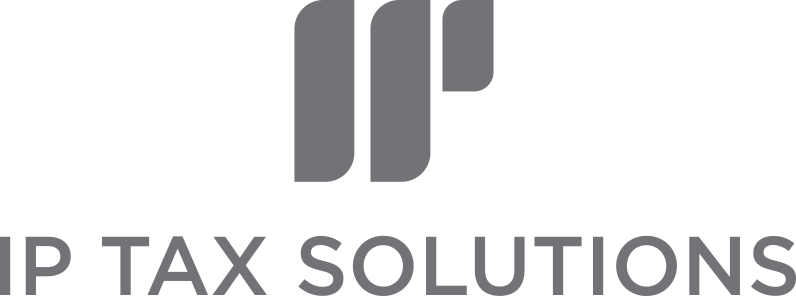If your company is involved in software development, then you might be able to benefit from the UK Government's research and development ('R&D') tax credit incentives.
We have first-hand experience of helping software development companies across the UK access tens or even hundreds of thousands of pounds of funding via this tax relief.
This relief seeks to reward dynamic and entrepreneurial companies that are prepared to take the commercial and financial risk of seeking to push the boundaries within the software industry.
It has been a pleasure to watch our software clients accelerate their staff hires and move into bigger premises ahead of schedule because of the cash injection that they have received directly from the R&D tax credits scheme.
It remains as one of the best sources of funding support available for innovative UK software companies.

How much can software R&D tax credits be worth?
For software development companies, their biggest cost is normally their employee costs. After all, software engineers tend to be much sought after and can often command high salaries.
The good news is that a core qualifying cost under the research and development incentives include salary and wage costs. So software companies that have large teams of qualified engineers and developers directly engaged in R&D work can find that their claims can mount up quite quickly.
As a rule of thumb, the effective rate of cash tax savings under the SME R&D tax relief is 25% (in corporation tax savings) for a profitable company and 33% for a loss-making or pre-revenue company (as tax credit rebates).
So an innovative software company with a team of say five engineers paid an average of £40,000 each in staff costs could secure a cash tax saving of £25,000 for a profitable company and £33,000 for a loss making company (assuming that they are say 50% engaged in qualifying R&D). This is before taking into account employer's NIC and pension contributions that would further boost the claim cash saving or refund.
Subcontractors and agency worker costs can also be included in your claim (restricted to 65% of the invoice value) plus software licence costs used in the R&D work (note the introduction of the PAYE/NIC cap for accounting periods commencing after 1 April 2021 and the impact on subcontractors).
Finally, a proportion of utility costs can be included although these costs tend to be limited for most software companies or buried in the 'service charge' element of the lease agreement.
Whilst providing a welcomed cash injection for many startups and growing companies, the R&D tax credit benefits can be reaped year-on-year provided the innovative work is maintained and actively deployed within the company.
For those companies that fall outside the SME definition, there is a Large Company scheme relief known as the Research and Development Expenditure Credit ('RDEC') that can also benefit software technology companies.

What type of software projects can qualify for R&D Tax Credits?
There is no prescriptive list of qualifying development projects because software development companies that operate within the computer science and information technology (ICT) sector must follow the same BIS R&D guidelines that every other UK company must follow to identify qualifying R&D work.
The key gateway tests for a commercial project are:
An advance in science or technology or an appreciable improvement in science and technology: this technological advance in knowledge and/or capability must be demonstrated from the perspective of the overall knowledge and capability of the industry as a whole (ICT) and not just from the perspective of the company itself. This can often be difficult to ascertain in practice, so HMRC will often revert to their in-house computer specialists and may also seek assurances from the competent professionals within your company (e.g. lead engineer or lead developer) if they open an enquiry. For an appreciable improvement to qualify there must be some form of adaptation and the improvement must be regarded as a genuine non-trivial change. Routine adaptation of an existing product or process is not R&D for tax purposes.
Technological uncertainty - what was it about areas of the project work that were not readily deducible to a competent software engineer at the outset of the project? What was it about computer science that meant that you could not do what you wanted it to do at the outset? Was it a matter of theoretical or practical feasibility whether your technical objectives or development activities could be achieved? What were the existing capabilities within your domain? What was the technical gap or shortfall in knowledge or capability in the area of computer science or information technology and what did you plan to do to overcome them (whether successful or not)? Were there aspects of system uncertainty in terms of how programmes or components might fit and operate together?
Project boundaries - you must identify the specific aspects of technical work that you have carried out within the wider commercial project that fall within the boundaries of R&D for tax (e.g. for the identification of who within your team was involved and for what percentage proportion of their time). R&D begins when work to resolve the scientific or technological uncertainty starts, and ends when that uncertainty is resolved or work to resolve it ceases. HMRC is keen that clear project boundaries are defined to clearly define the scope of qualifying expenditure.

Common examples of activities that can be included in an R&D Tax Credit claim for software projects
As the technology sector is so fast moving, there are a wide variety of areas where R&D might exist and for new examples of R&D to emerge.
Common examples of qualifying types of software development might include:
- API solutions
- artificial intelligence ('AI')
- augmented reality
- cloud applications
- mobile applications
- software library extensions
- novel data structures or processing
- robotics
- neural networks
- microservices
- blockchain
- IoT
- storage technologies
- machine learning
- speech software
- tools for image processing
- video games and other new and emerging software frameworks.
Qualifying expenditure that can be claimed for R&D software development projects and activities
The R&D tax rules are prescriptive as to what costs can and cannot be included in a claim.
Eligible expenditure is as follows:
- Staff wages & salaries as processed through PAYE i.e. gross wages, employer's National Insurance Contributions ('NIC') and employer's pension contributions (plus reimbursed expenses in certain situations)
- Subcontractors and freelance professionals
- Agency staff
- Software licensing fees
- Consumables e.g. lighting, heating and power
Capital expenditure does not qualify - although capitalised development costs (e.g. developer wages) can be claimed if they are treated as an intangible asset on the company balance sheet.
A separate claim is prepared and filed for each accounting period.

What activities do not qualify for software R&D claims?
Routine development work such as using established coding methodologies, bug-fixing and the use of well established libraries, off the shelf software and frameworks do not qualify - as such work does not involve any advance in capability or the resolution of technical uncertainties.
Many companies mistakenly believe that if no solution exists in the market at the start of a commercial project then the development work to create it must automatically be qualifying R&D. This is not necessarily the case. The absence of existing software (an off-the-shelf solution) might represent the start of a qualifying project provided it passes the gateway tests of seeking an industry-wide technical advance and the need to overcome technical uncertainty. But not otherwise.
Don't forget that if you are a video games development company, there is a separate video games tax relief especially for you that does not require R&D activities.
HMRC updated guidance for software companies
HMRC published additional guidance in October 2018 specifically for the software sector given the rapid advancements in this sector.
This new updated guidance sought to remove outdated examples that existed in HMRC's guidance manuals as these had since become obsolete given the advancements in underlying technology in the software industry since their original publication.
The new examples are helpful although it should be noted that they are supplementary and represent HMRC's own view only, with the BIS Guidelines remaining as the main source of guidance.
How we can help
Not only do we help other accountants overcome the challenges associated with clearly identifying and capturing qualifying R&D projects and costs for software companies, but we can also help you directly too.
We have extensive experience in helping companies in the software sector optimise their claim via a comprehensive and robust claim preparation methodology.






